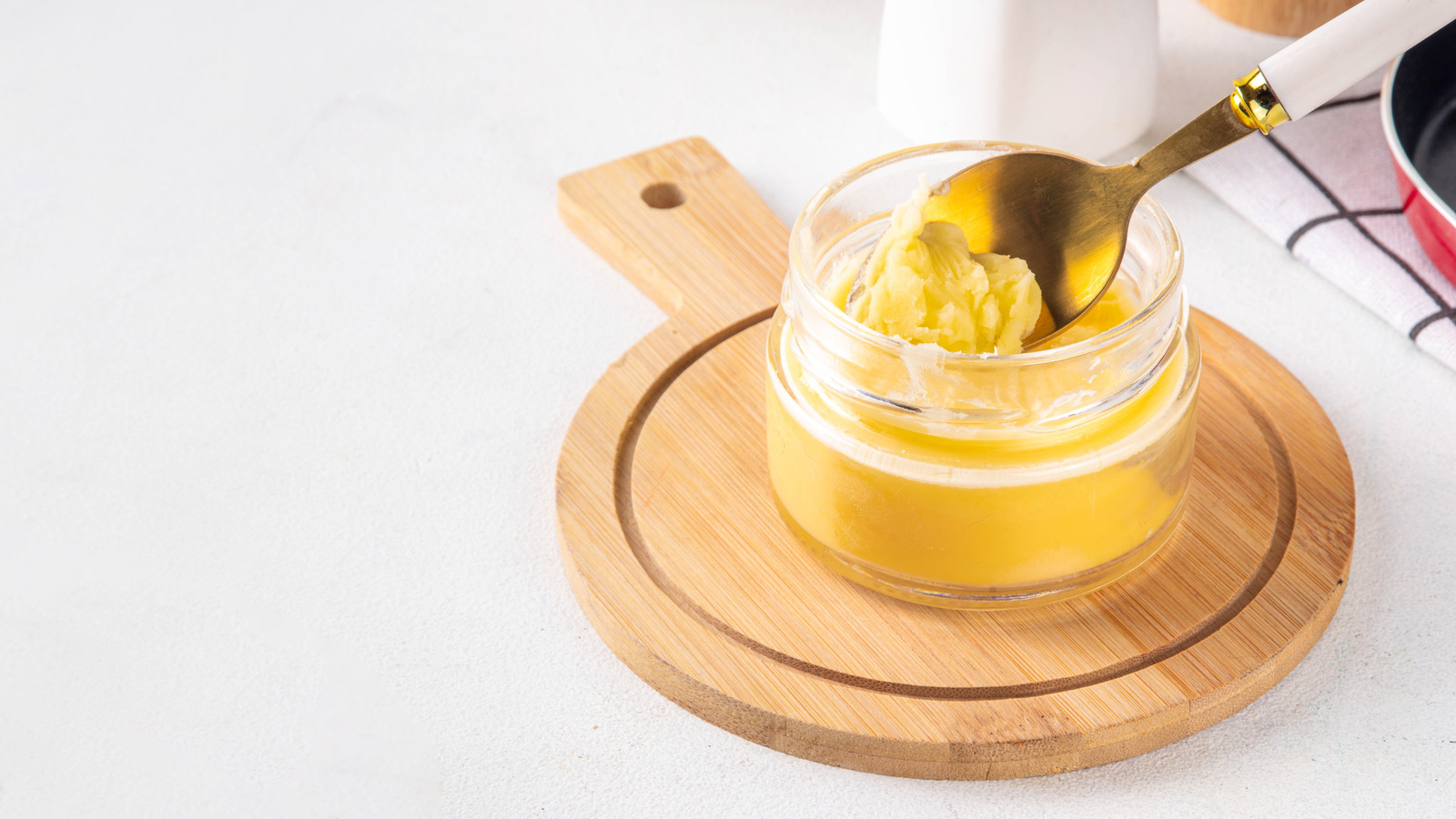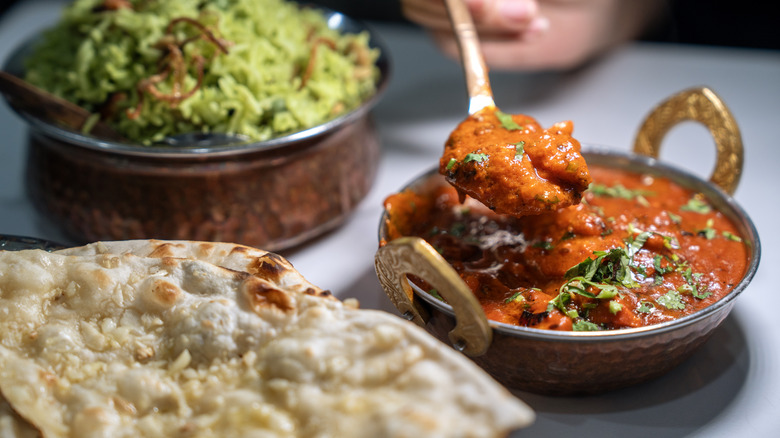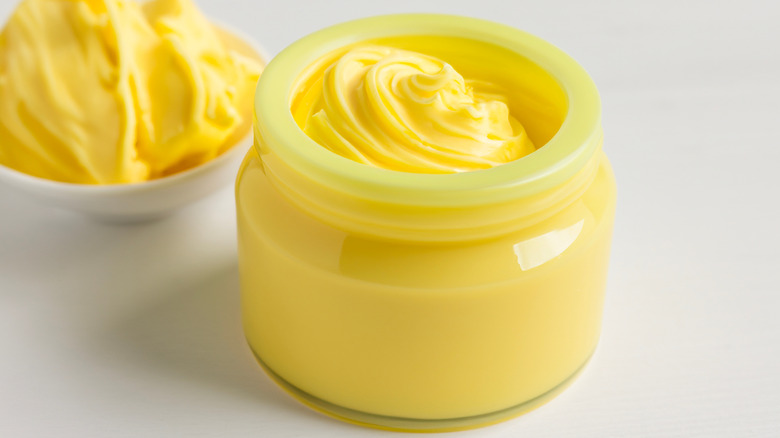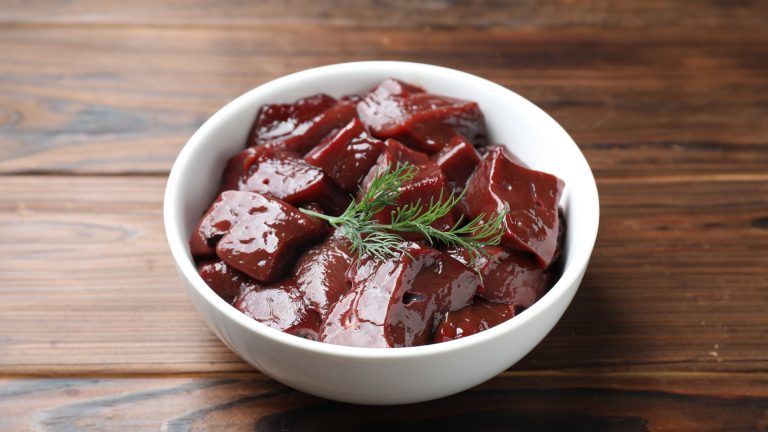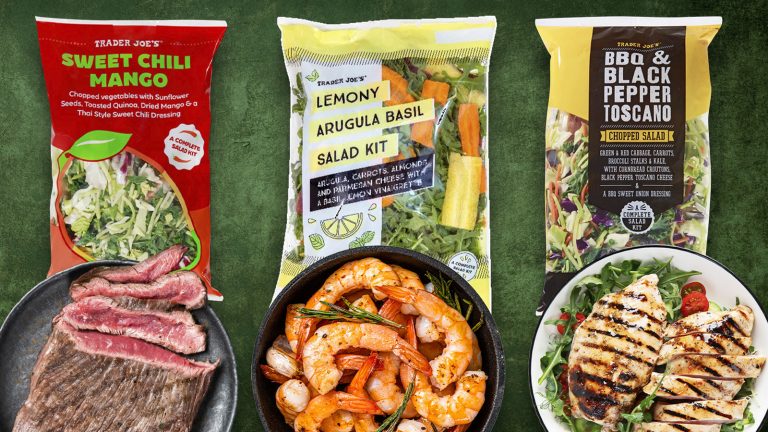Ghee (often referred to as liquid gold) and clarified butter share several similarities. Both can be used for sautéing or roasting vegetables and meats (because of their higher smoke points), as a substitute for those who are lactose intolerant (the sugar lactose and protein casein are removed), in making sauces (like hollandaise), toasting grains, and cooking many Indian dishes. Ghee and clarified butter also have longer shelf lives than regular butter because of the lack of milk solids.
Clarified butter and ghee start off the same — by melting butter. When the white milk solids separate from the yellow butterfat, you’ve reached the clarified butter stage. Simply skim off the foamy solids, and strain the butter fat with a cheesecloth to get rid of any remaining solids. Ghee, however, is prepared by allowing the milk solids to turn brown. Do this over low heat. When those brown bits fall to the bottom, the mixture is ready to be strained, leaving behind the nutty-flavored butter or ghee.
What is ghee?
Ghee is considered a variety of clarified butter. In Indian culture, ghee has been used for cooking and in religious rituals. The traditional way to make ghee is with cultured butter. This type of butter can be easier for lactose intolerant-people to digest, and some say it helps balance the three doshas (energies) of Ayurveda. As Healthline explains, “Ayurveda is one of the world’s oldest forms of holistic medicine.” The three doshas include vata (related to movement), pitta (digestion), and kapha (structure).
People who follow a paleo diet favor ghee because of its high fat content. Ghee can also support healthy cholesterol levels. The flavorful butter is an excellent source of omega-3 fatty acids and vitamins A, E, and K. Clarified butter packs many of these same vitamins for the same amount of calories as ghee (about 120 per tablespoon). Ayurvedic medicine also uses ghee to ease inflammation.
What is clarified butter?
When it comes to French cuisine, clarified butter reigns supreme. Unlike ghee, you’re not likely to find clarified butter on store shelves or in the refrigerated section. So, if you’re looking to cook with clarified butter, you’ll probably need to whip up a batch yourself. Most cooks prefer to prepare it on the stove, but it can be done in the microwave. Just watch it closely to avoid burning and prevent any browning that’ll turn your mixture into ghee. Thankfully, both butter options can be kept in your pantry for a few months or up to a year in the refrigerator.
Some recipes slide butter aside for ghee or clarified butter. The two can often be used interchangeably for grilled cheese sandwiches, pasta, Buffalo sauces, and even steak. Ina Garten even uses clarified butter for pancakes. When deciding which butter to use, keep in mind that ghee differs from clarified butter because of its nutty flavor.


